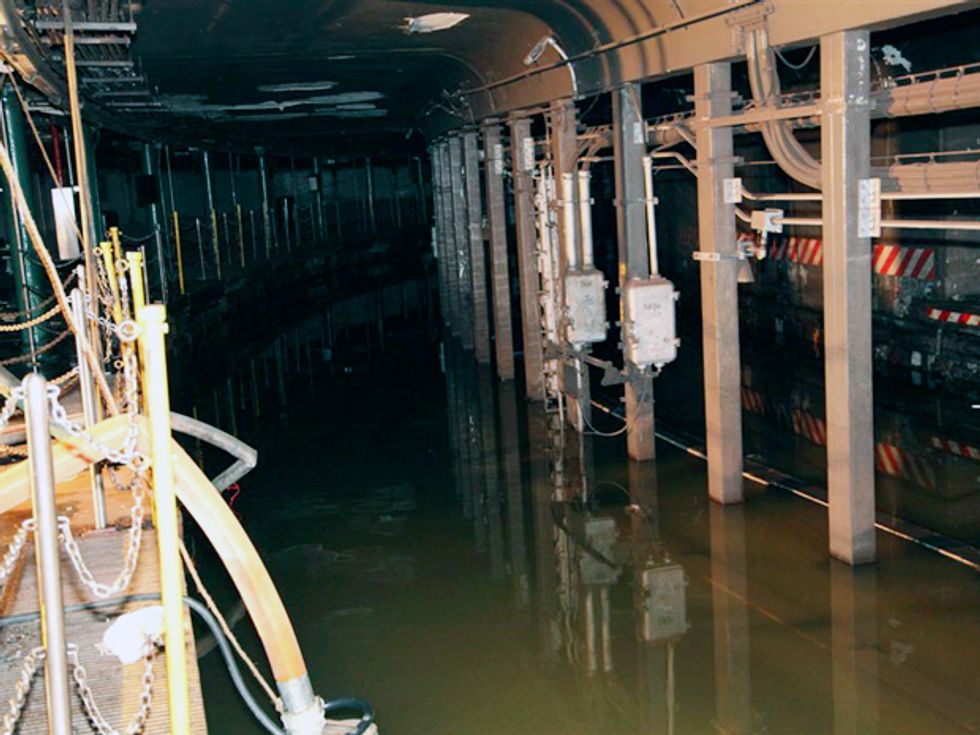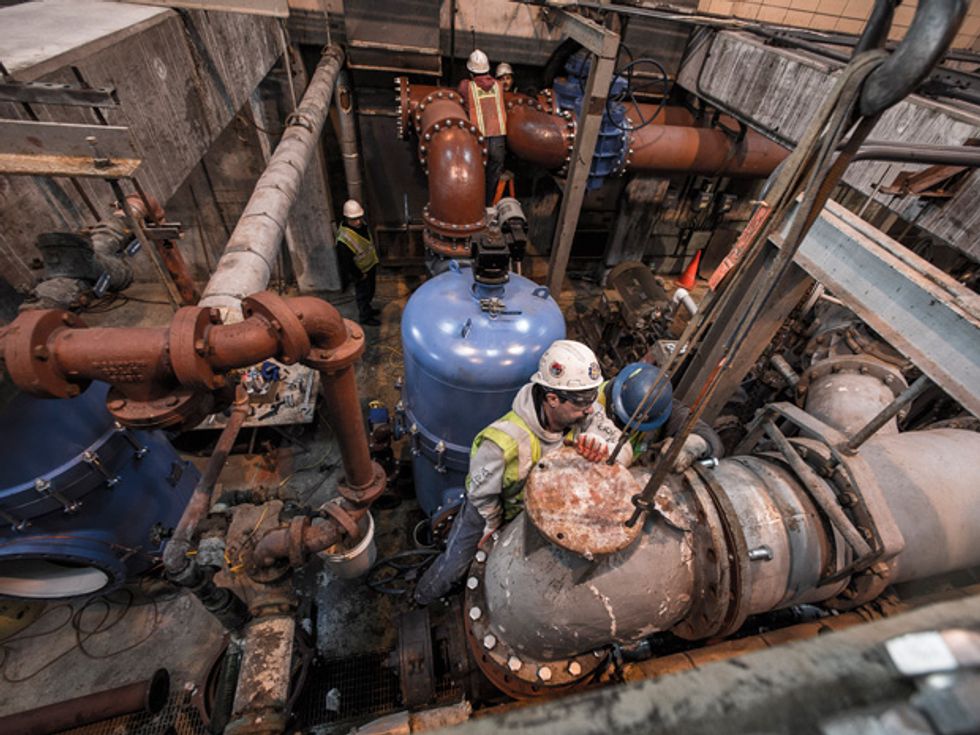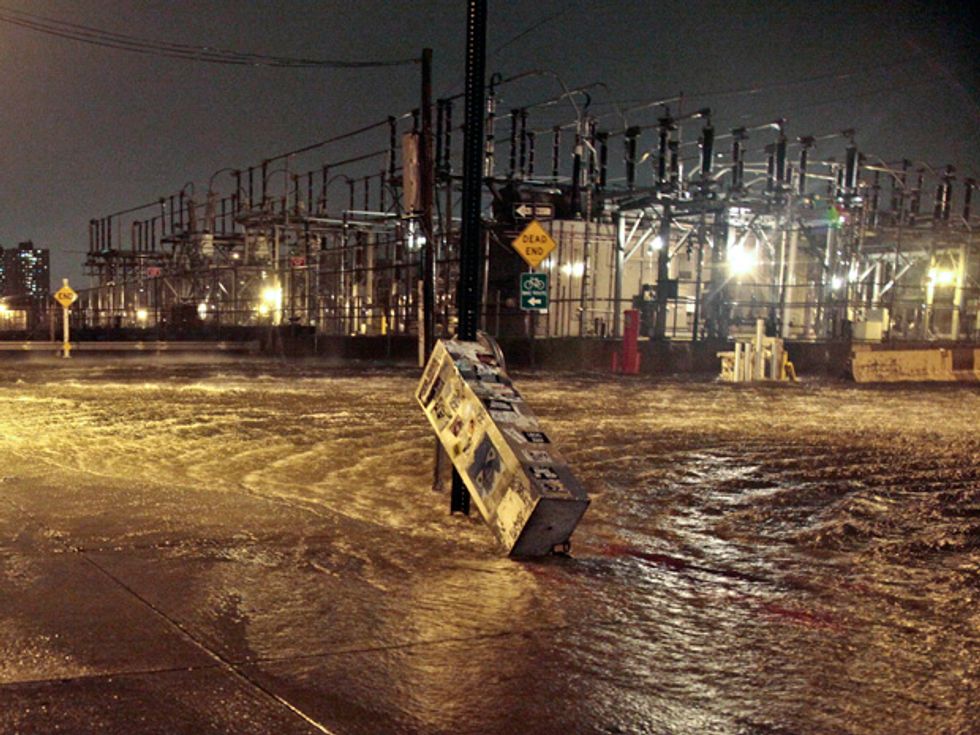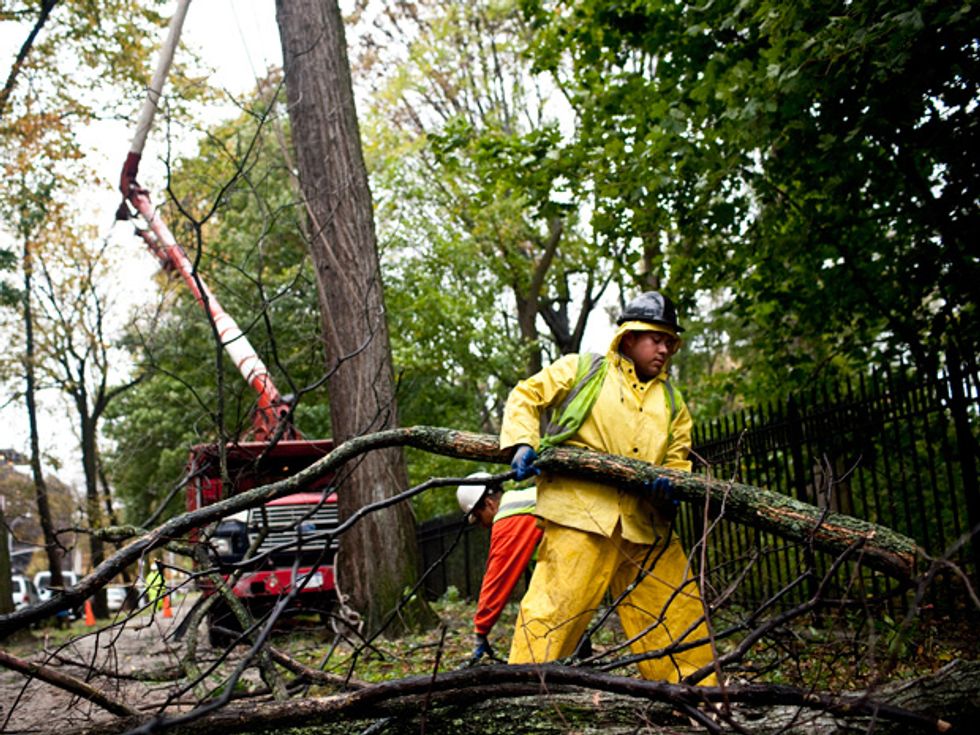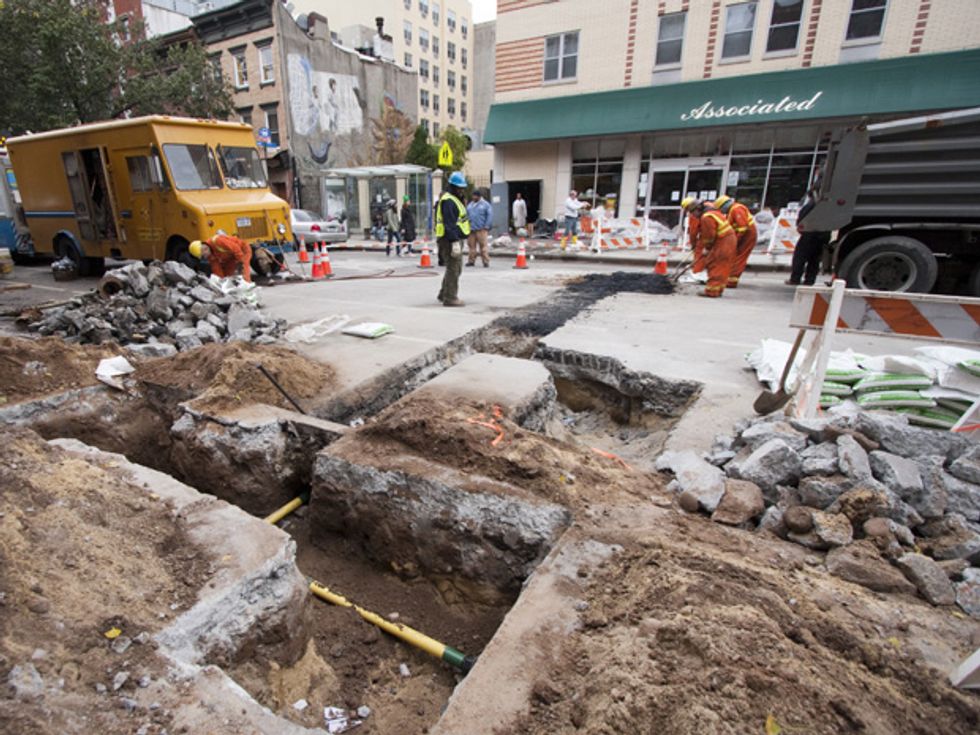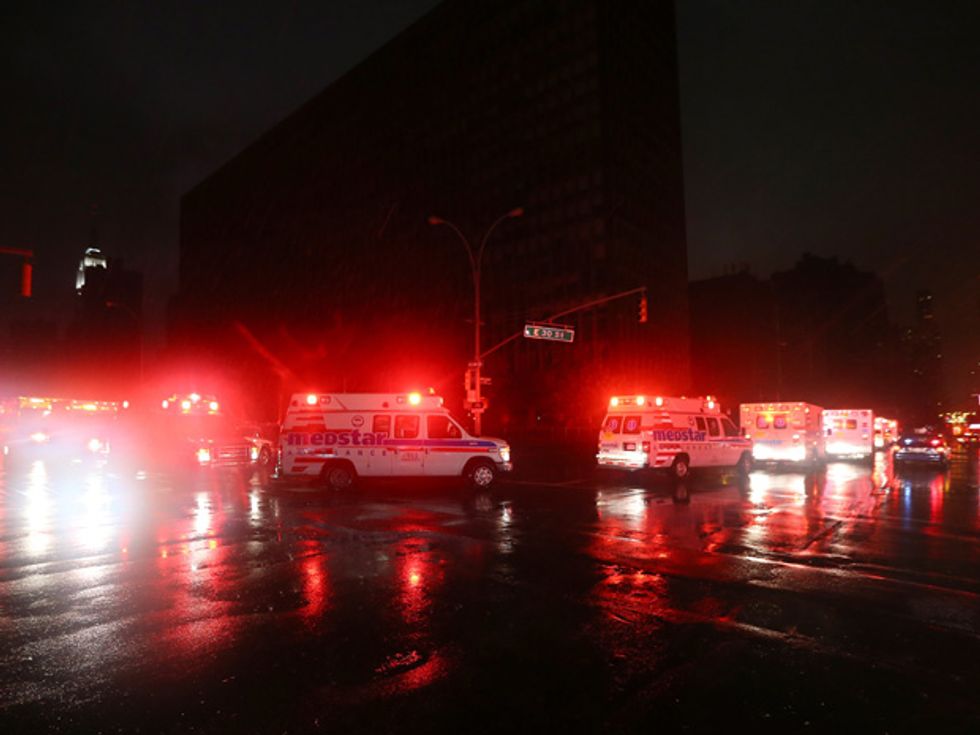One Year Later: Superstorm Sandy Underscores Need for a Resilient Grid
Traditional tactics like stronger power poles and trimming vegetation, plus newer technologies like microgrids, will lead to grid resiliency
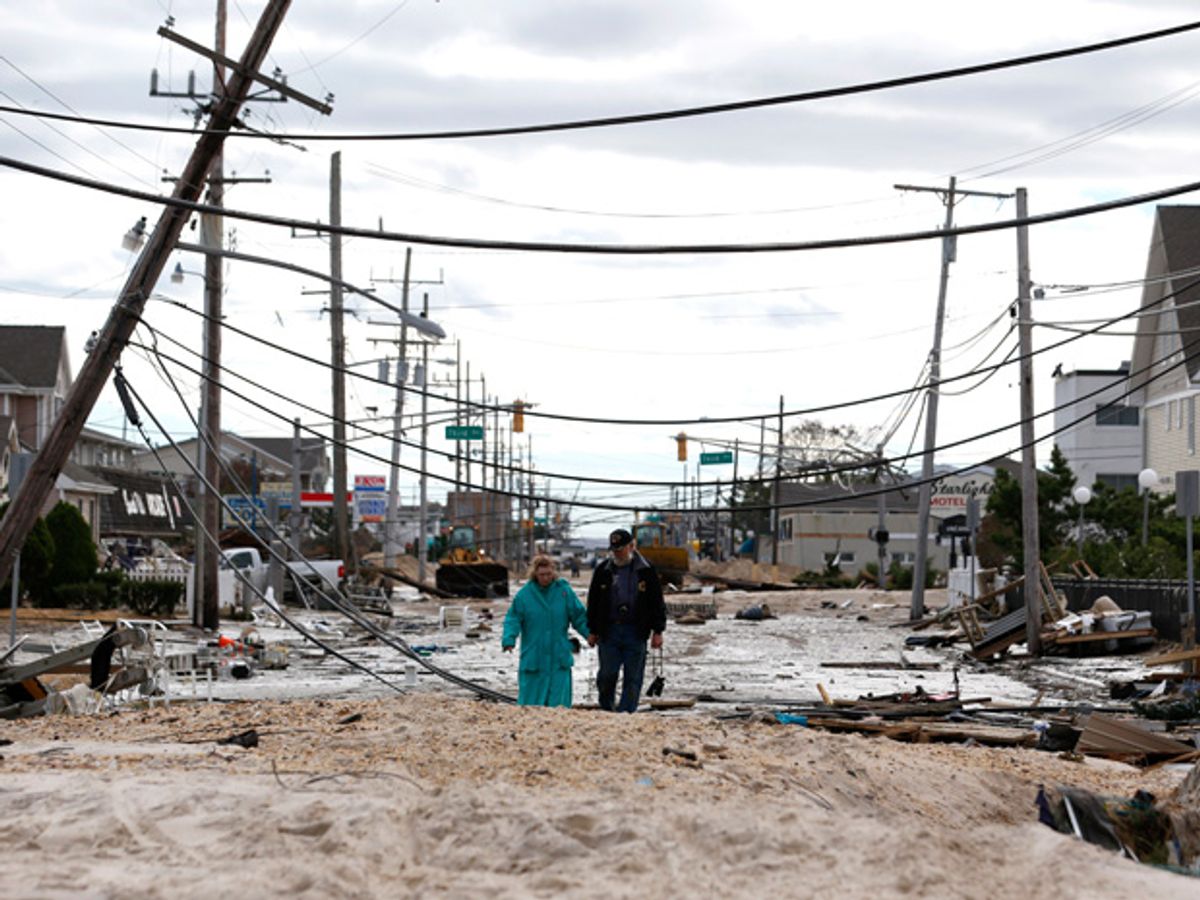
On the evening of 29 October 2012, Superstorm Sandy made landfall in southern New Jersey, near Atlantic City. At that point, it was officially classified as a “post-tropical cyclone,” but the label masked the storm’s enormous reach and destructiveness. As Sandy’s multiple weather systems collided over the most densely populated region of the United States, 24 states, including the entire Eastern Seaboard, from Florida to Maine, and west to Michigan and Wisconsin, experienced the storm’s wrath. In the United States, the estimated damage totaled US $65 billion, and at least 181 people died.
Entire neighborhoods in coastal areas were wiped out, ground transportation was disrupted for days, a quarter of the cellphone sites in 10 states went down. But Sandy took its worst toll on the electricity grid. In all, more than 8.5 million households and businesses—that is, tens of millions of people—experienced power outages, and in some places, restoring power took weeks. Wastewater treatment plants up and down the mid-Atlantic lost power and failed, sending billions of gallons of raw or only partially treated sewage into the region’s waterways. The storm made it painfully clear to all how fragile the aging U.S. power-system infrastructure is.
What has also become clear is that completely hardening the power system to extreme weather—making it invulnerable to damage—is close to impossible. The power engineering community is therefore looking at holistic approaches based on “grid resiliency.” This includes traditional tactics, such as upgrading power poles and trimming trees near power lines. But it also encompasses newer approaches, such as microgrids and energy storage, which allow operators to quickly reconfigure the system when portions of the grid go down. Implicit to such plans is the need to ensure uninterrupted power to critical sites such as oil and gas refineries, water-treatment plants, and telecommunication networks, as well as gasoline stations, hospitals, and pharmacies.
Some of the nation’s leaders seem receptive to such approaches. In recent meetings in Washington, D.C., two congressmen from New York state, whose districts suffered some of the worst damage during Sandy, expressed support for grid resiliency. Peter King, a Republican who represents a district on the South Shore of Long Island, said, “It is imperative that our critical systems and facilities are resilient and operate in the face of catastrophic events such as Superstorm Sandy. Spending now on mitigation efforts can save lives and diminish the large costs associated with recovery efforts.” Steve Israel, a Democrat who represents Long Island’s North Shore, agreed: “We learned the hard way from Hurricane Sandy that we must invest in an infrastructure that can withstand and recover from extreme weather. That’s why I believe that we must both harden our infrastructure and ensure it is resilient to future extreme weather events.”
A Storm’s Toll on the Grid
Power systems are vulnerable to extreme weather in many forms—floods, windstorms, ice storms, snowstorms, hurricanes, heat waves, prolonged droughts that trigger wildfires, and so on. Various studies have concluded that storm-related power outages cost the U.S. economy between $20 billion and $55 billion in a typical year. Data also suggest that outages from weather-related events are on the rise.
For the grid, flooding is the worst of these extreme weather events because of the long-term damage that floodwater can do to power substations and to underground electrical systems. During Superstorm Sandy, for instance, the storm surge sent water sloshing into many underground substations in New York City, leading to widespread outages. Restoring a flooded substation takes much longer than restoring a downed power line that’s been damaged by ice or wind because you have to deal with the large amounts of water, rust, and mud left trapped in the structure.
Switchgear, relay panels, transformer fans, pumps, and control kiosks are among the most susceptible pieces of substation equipment. Once all the water has been pumped out, each piece of equipment must be thoroughly dried and cleaned; even small amounts of moisture and dirt can render some electric equipment inoperable. Breaker mechanisms may have to be disassembled and cleaned manually, and items such as bearings, pins, cylinders, rings, latches, and gaskets may need to be replaced.
If the flooding is from salt water, as was the case in many areas hit by Sandy, repairs may be even more involved: Prolonged saltwater exposure can damage cables, motors, metal fasteners, and electronic parts and can cause short circuits. Repairing or replacing some equipment is complicated by the fact that a lot of it is old (sometimes more than 50 years old) and obsolete.
The Limits of Hardening
In the aftermath of the severe hurricanes in the 2000s, regulatory bodies in Florida, Texas, and a few other states mandated that their utilities either adopt or investigate hardening options for their systems. For example, Rule 25-6.0342 of the Florida Administrative Code, which went into effect in 2007, requires investor-owned electric utilities in that state to file a “storm hardening plan” with the Florida Public Service Commission every three years. The plan must include a detailed description of the construction standards, policies, and procedures that the utility is using to enhance the reliability of overhead and underground electrical transmission and distribution facilities.
The most common hardening practice is replacing wooden utility poles with poles made of steel, concrete, or a composite material and upgrading transmission towers from aluminum to galvanized-steel lattice or concrete. Installing guy wires and other structural supports is another common tactic, as is increasing the number of poles per kilometer of line. Such measures are all intended to allow the pole, tower, or other structure to better withstand windstorms, including hurricane-force winds, as well as ice storms and snowstorms.
Hardening is an obvious way to seek improvement. Wood shrinks and weakens as it ages; insects, woodpeckers, and rot can also weaken a wood pole. The original design strength of conductors can also decline with age due to corrosion. An older, weakened wood pole hit by a 160-kilometer-per-hour wind can quickly fail. In the United States, the National Electrical Safety Code defines how much wind a utility pole should be able to endure.
But even if every pole and tower were upgraded to concrete or steel, we would still experience storm-related outages. The reason is that flying debris (such as roofs and road signs) and vegetation (such as falling trees and tree limbs) are the primary causes of distribution-pole damage during a storm, not strong winds themselves. Thus, changing pole designs to meet extreme wind standards may unnecessarily increase costs without really improving the overall resiliency of the network.
Given that vegetation does pose a real problem for power lines, tree trimming is another major component of grid hardening. Data from past storms have shown, for example, that tree-related failures increase exponentially when wind speeds exceed 100 km/h. So, routine maintenance of distribution and transmission lines inevitably includes clearing trees and other vegetation from power-line right-of-ways (that is, the areas immediately surrounding the line).
Here, too, though, such measures are not a cure-all. In high-wind situations, for instance, the risk of airborne debris coming from trees outside the right-of-way can exceed the risk from trees within the right-of-way by a factor of 3 or 4 to 1. And while increasing the number of poles per kilometer of line can reduce wind-related outages in certain areas (specifically those places where storm damage tends to result from direct failures of poles and other hardware), if the storm damage instead tends to come from debris and vegetation that cause the poles to fail, this approach can actually result in more pole failures rather than fewer.
Burying Cables Is Not the Answer
After any severe storm in which power lines go down, people often talk about taking existing overhead lines and facilities and placing them underground as a solution. This practice does work nicely in certain situations, such as at intersections of major highways. But burying cables is not the best answer in all cases.
During the hurricane season of 2005, for example, utilities reported that underground assets in some coastal communities were washed out to the ocean; overhead equipment, they said, might have sped up restoration work. A number of utilities have also identified areas where existing underground equipment has been prone to frequent flooding and should therefore be replaced with overhead equipment. And burying power lines is costly. Converting overhead lines to underground lines can cost $2M per mile (about $1.2M per KM), according to the U.S. Energy Information Administration. When North Carolina considered the idea of burying its power lines 10 years ago, experts concluded that it would cost $41 billion and take more than 25 years.
How to Build Resiliency Into the Grid
Unlike grid hardening, resiliency measures aren’t intended to prevent damage from extreme weather; rather, they minimize the impact of any damage by enabling electric facilities to continue operating and promoting a rapid return to normal operations after damage and outages occur.
Making the power distribution system more resilient starts with changes in the design. It may be advantageous, for example, to split up a large network into smaller circuits, and to reexamine the circuit arrangements to enhance the speed of repair. Greater deployment of smart grid technology can also help. When an electrical outage occurs, the smart grid’s intelligent switches can detect a short circuit, block power flows to the affected area, communicate with other nearby switches, and then reroute power around the problem to keep as many customers energized as possible. Because these intelligent switches can do all this automatically or under the control of remote operators, they can reduce the time it takes to restore power to just a few minutes, rather than the hours, days, or even weeks it can take a repair crew to arrive on the scene and restore circuits manually.
During Sandy, a number of locations in the affected areas still had electricity, because they had both on-site power generation and the means to operate independently of the grid. The College of New Jersey, New York University, Princeton University, and Stony Brook University each used a combined heat and power (CHP) plant on campus to keep the lights and heat on during and after Sandy. New York University’s case was particularly vivid because the area immediately surrounding it in downtown Manhattan was completely blacked out. Thanks to NYU’s 13.4-megawatt CHP plant and its self-sufficient microgrid system, which distributes electricity independently of the main utility grid, 26 of its buildings still had electricity. (On the other hand, the NYU Langone Medical Center, located on the eastern edge of midtown Manhattan, suffered significant flooding, which knocked out emergency power and forced the evacuation of hundreds of patients.)
How exactly do microgrids help in such situations? Microgrids are electrical systems that can operate either autonomously or as part of a larger electric grid. To do that, they need at least one distributed energy resource, such as the CHP plant at NYU, or an energy-storage facility, such as a large-scale battery installation. These resources provide energy to the microgrid, and they can be disconnected from and reconnected to the utility with minimal disruption.
When a microgrid is operating independently of the larger grid, it must be able to prioritize where it supplies power so that critical buildings, like hospitals, continue to receive uninterrupted power. If the outage is expected to last only a short while, the microgrid may be able to meet everyone’s power needs; for a longer outage, it may be able to supply power only to critical loads. Decisions about load management, therefore, require assessing how long the microgrid will be operating in isolation. A dynamic microgrid will be able to expand or contract its load requirements depending on the available generation and the priority of the load to be served.
Ultimately, a resilient grid would comprise many microgrids, which could, in the face of a major storm, split into a controlled set of independently survivable islands. Power engineers are also looking at using such dynamic microgrids to help stitch the system back together after a major storm; each microgrid can be thought of as an “island” of balanced supply and demand that can make recovery efforts faster.
As the memories of Superstorm Sandy recede, we must not let our guard down. Ensuring resiliency of the grid against extreme weather will require not just hardening utility structures but also enabling electric facilities to continue operating despite damage and promoting a rapid return to normal operations after the storm has passed. We must also carefully consider how to protect critical power loads and infrastructures, and we need to develop a resilient power strategy for communications, gas, and water systems, to make them less vulnerable to disaster. If we can make the electrical grid smarter and more flexible, the impact of even the worst storm can be minimized.
A correction to this article was made on 06 November 2013.
About the Author
Nicholas Abi-Samra is a senior member of IEEE, a professional engineer, and senior vice president, electricity transmission and distribution, at DNV GL. An expert in power systems, planning, operations, and maintenance, he served as the general chair and technical program coordinator for the 2012 IEEE Power & Energy Society General Meeting. Last year, shortly before Superstorm Sandy made landfall in the United States, he talked with IEEE Spectrum about the likely effects of the storm on the power grid; all of the things he mentioned came to pass. Abi-Samra can be reached by e-mail at nicholas.abi-samra@dnvkema.com.
To Probe Further
“Sample Effects of Extreme Weather on Power Systems and Components, Part I: Sample Effects on Distribution Systems,” by Nicholas C. Abi-Samra, Karen R. Forsten, and Robert Entriken. Proceedings of the Power & Energy Society General Meeting, 2010.
“Extreme Weather Effects on Power Systems,” by Nicholas C. Abi-Samra and Wade P. Malcolm. Proceedings of the Power & Energy Society General Meeting, 2011.
“Actions Before...and After a Flood,” N.C. Abi-Samra and W. Henry. IEEE Power & Energy Magazine, March-April 2011, pp. 52–58.
“Getting Lights Back on Can Be Maddeningly Complex,” by Haya El Nasser. USA Today, 31 October 2012.
“Hardening the System,” by Nicholas C. Abi-Samra, Lee Willis, and Marvin Moon. Transmission & Distribution World, February 2013.
“Extreme Weather Effects on the Energy Infrastructure” [PDF], by Nicholas C. Abi-Samra. EIC Climate Change Technology Conference, May 2013.
